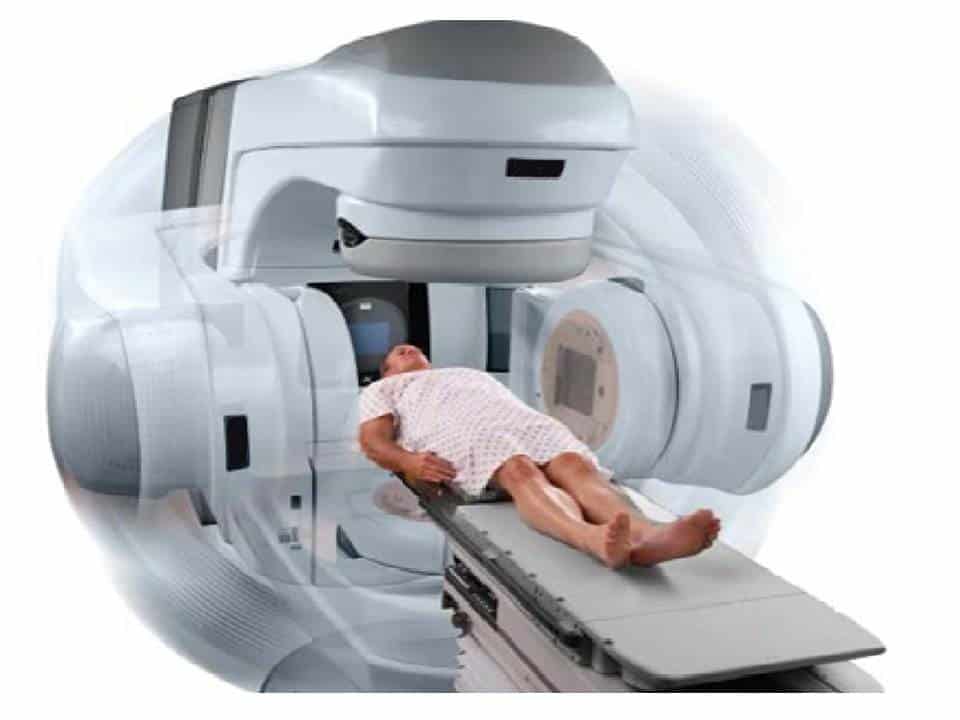Leonardo Barrios, Cancer Care Parcel, 1 July 2019

There is a wide range of radiation in nature, to which we are exposed at all times, however; the use of radiation in medicine has been one of the great advances in applied basic sciences.
Medical physics includes the use of ionizing radiation for medical purposes, either to diagnose a disease or to use them in treatment.
Radiotherapy includes the therapeutic application of ionizing radiation such as X-rays, gamma rays, electrons, protons, light ions, and that can be applied in different ways.
The most widely used is Teletherapy, which involves applying radiation from outside of the patient through a machine that produces irradiation. Brachytherapy is another way of radiotherapy, and consists in place radiation sources directly into the tumor. A medical physicist contributes to ensuring a high standard of quality radiotherapy service in the hospital environment. The essential responsibility in the clinical practice of the medical physicist is to optimize the use of radiation to produce a quality diagnostic or therapeutic procedure. The public and, above all, the patients, are unaware of its existence and its role in the complex network of Radiation Oncology.

The medical physicist performs in Radiotherapy tasks closely linked to the treatment of oncological patients, such as the calculation of treatment times, design of treatment techniques, determination of the distribution of energy imparted inside the patient are under their control responsibility. Due to this, there is a remarkable implication in the quality and the success of the treatment. The determination of the dose applied to the patient is based on a detailed knowledge of the characteristics of the radiation that are used, which are obtained from important experimental work on the equipment. These characteristics must also be subjected to constant checks to ensure the optimal state of the equipment and sources.
In the hospital environment, the medical physicist works with a multidisciplinary group, together with radiotherapist, technicians and dosimetrist; while the radiation oncologist makes the decision about prescription of treatment, medical physicist is in charge of planning the treatment and the technician is in charge of the application of the same communication between these professionals is vital since, they optimize the treatment applied to the patient.

To carry out the planning of the treatment, medical physicist uses tools such as diagnostic images to precisely locate the tumor volume, guaranteeing that the radiation is directed to this specific region, without affecting organs that are around it. In this way, it is ensured that the treatment provided to the patient is more precise. The different image forms are fused to the Computed Tomography (CT) image to allow an optimal spatial correlation. The Magnetic Resonance Imaging (MRI) is especially useful in the anatomical definition of tumors of the central nervous system, head and neck, prostate and soft tissues. The Positron Emission Tomography – Computed Tomography (PET – CT) provides functional information, which allows defining areas that require higher doses and areas that must be protected.
The Computed tomography images are used to calculate the dose distribution quantifying the absorption of radiation for each tissue. In treatment planning, position, number, direction, shape, energy, and dose proportion for the radiation fields or beams are optimized. The optimization of the plan is an iterative process between radiation oncologist and the medical physicist until reaching the appropriate plan for treatment.

The performance of the medical physicist in radiotherapy is key to providing a quality service, for which his scientific and practical training must be of a high level. Their knowledge is also directed to the development and optimization of new treatment techniques, having an important role in adoption, implementation, development, safe use and optimization of advanced techniques and technologies.
The main functions of the medical physicist in radiotherapy are:
(a) Technical specifications of equipment and design of facilities.
Collaboration in the definition of purchasing treatment units, simulators, imaging systems, and treatment planning systems; participating in the design of the facilities, especially performs or verifies the calculation of the shields, ensuring that all safety and functionality requirements are met.
(b) Acceptance and commissioning of equipment.
Certifies that the units of therapy, simulation, images and planning of treatment work in accordance with the technical specifications of purchase and that the equipment is able to be used clinically.
(c) Technical supervision of equipment maintenance.
Supervises maintenance of the equipment, and is responsible for its acceptance, authorizes its clinical use after maintenance, is responsible for ensuring that no alteration caused by maintenance or repair affects the operation or calibration of the treatment units, simulation and planning, and recording the results of their evaluations.
(d) Calibration of radiotherapy equipment.
Is responsible for the calibration of all the treatment units and verification of the activity of the radioactive sources according to protocols adopted. (e) Quality guarantee. Is responsible for the elaboration and execution of the physical aspects of the quality assurance program. Specifies basic standards that will be verified when accepting a device and putting it into service for clinical use; adapts or develops the acceptance and commissioning procedures, establishes and carries out periodic quality controls that verify that the technical parameters of equipment operation remain within acceptable margins in relation to the reference values.
Among multiple assignments that can be developed by the medical physicist to be the person in charge of the Radiological Protection in the hospital, of both the public and the healthcare staff; is responsible for estimating and, insofar as possible, reducing the dose of radiation that it is imparted to the population as a result of diagnostic tests. This implies designing the structural shields of the rooms where radiation emitting equipment is installed.
The hospital is an interesting medium for a medical physicist, there are a series of tasks for which it is needed, and many others where can develop your own research lines and, in all of them, have the opportunity to work with training professionals very different from yours. On the other hand, medical physicist’s work has an immediate justification in the quality of patient care, within the scope of its competence. Radiotherapy has made far-reaching advances that have allowed us to increase the number of successfully treated patients and reduce complications at the same time.
